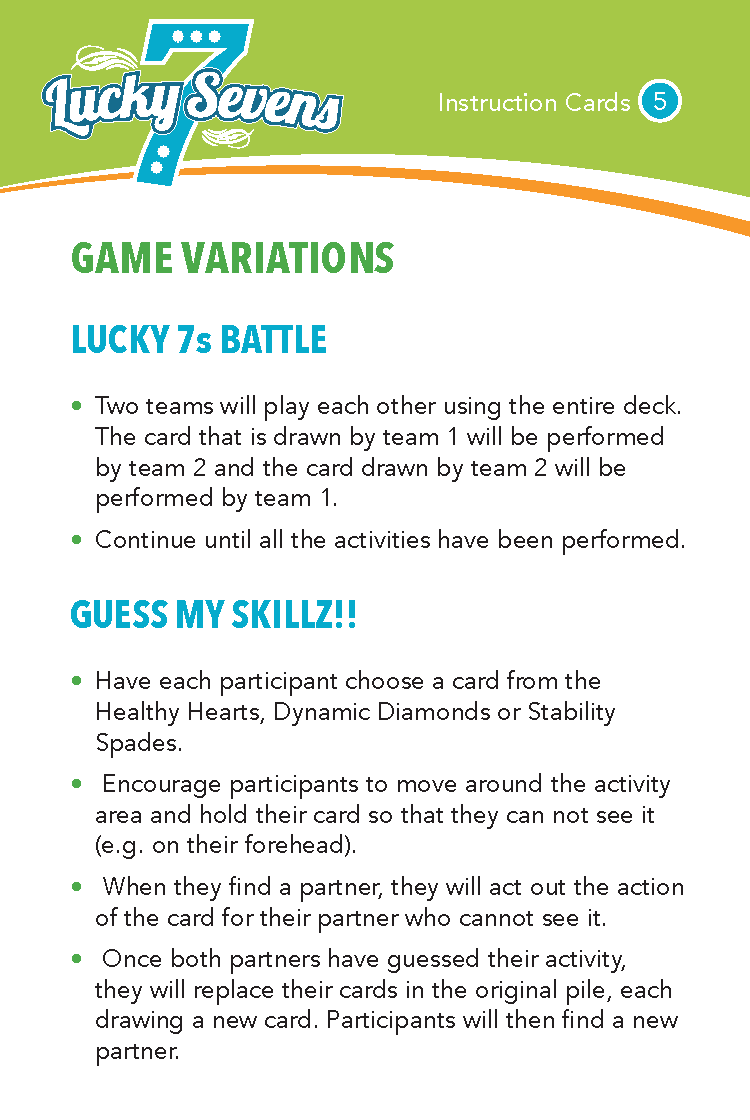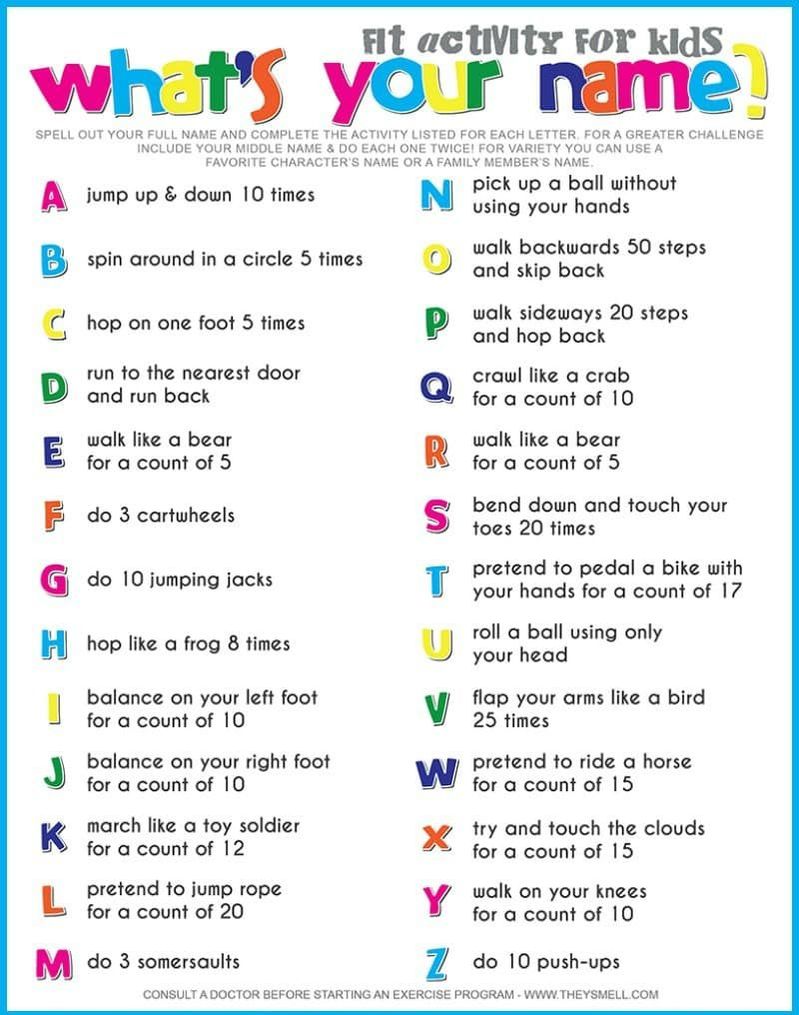MOVEMENT ACTIVITIES
|
EXAMPLE ACTIVITY LIST
K- Jog in place for 10 seconds. Q. Pretend to jump rope for 1 O seconds. J. 15 wall push-ups 10- 15 jumping jacks 9- 5 knee tuck jumps 8-10 squats 7- 10 jumping jacks 6- 10 wall push-ups 5- Dance for 10 seconds 4- 15 straddle jumps 3- 1 o straddle jumps 2. Shoot 5 paper balls into the trash can. A- Give the teacher 5 high.fives |
1. Fitness Dice
There are a few ways you can go about using the fitness dice. You can roll a dice and use the template on the right, or using a blank template write your own fitness for each number. Another way to to have a blank dice and a number dice. On each side of the blank dice write an exercise. Roll both dice and do the number of exercise that were rolled on both dice. 2. Yoga and Mindful Stretching Yoga is a great way to relax and center your students. They can be simple stretches to get the students moving or you can make it challenging for them. 3. Spell Your Name Workout This is a great thing to have handy when you want your students to move. You can spell a different students name each time or just look at this chart for different ideas to get students moving. There are different level templates available. Retrieved from: https://www.730sagestreet.com/spell-your-name-workout/ 4. Poppers These are a great way to work on fine motor skills. Create a popper by cutting a pool noodle into 1 inch slices, cut each slice in half. With the popper you can pop it into the air by squeezing the open sides together and letting go. There are a few things you can do with them such as popping them with one hand or popping then clapping and catching or have students create their own tricks. 5. Lucky Sevens (Exercise Charades) There are different ways you can play this game, but it is exercise charades. Divide the students into two groups. One student will hold up a card to their forehead without looking at it. The team will act out the exercise and the card holder will try and guess what exercise they are acting out. 6. Movement or Activity Read Aloud Read a book to the students that talk about movement or exercise even a book about animal movement. Students will act out the book during reading. 7. Recycle Bin Each student uses a crumpled piece of paper. The teacher will name body part that the students will use. The student need to try to get the paper into the recycle bin using that body part. 8. Four Corners Students are actively moving throughout the room. The teacher will count down and students will chose a corner. The teacher will roll the dice. The corner that is rolled wins the exercise. If a 5 is rolled everyone wins the exercise, for a 6 the teacher wins. 9. Down the Line Have students stand or sit in a line with the paper at the front. Students pass the paper over their head to the student behind them. Once the paper reaches the end, the last student comes to the front of the line and repeats. Continue until all students are in their original places. 10. Songs If you like to sing with your students, active songs would be a great one for you. This link includes many songs for you to chose from: https://blog.reallygoodstuff.com/67-kid-friendly-brain-break-songs-and-musicians-for-the-classroom/?epik=0cpQ0E_IW311w 11. Charades Students are divided into two teams. Students can either choose their own terms or be given specific ones. They will act out these terms and and team members have to try and guess what they are acting out. The team with the most right guesses wins. It could be used for subject specific areas to study terms. 12. Poker Fitness This activity can be done in pairs or small groups and requires a deck of cards and a list of activities to be done. The idea is to incorporate positive interaction with the possibility for the activity to tie into the current subject/curricular focus. Students pick a card (face down in front of them) and complete the required activity. The teacher could add an extra part to this assignment where students must say something they learned in class that day or answer a question between each card. Although this activity was created for junior high, it could be used at any level with small modifications to make it easier or harder. This activity would take about 5 minutes. 13. True or False Activity Break This brain break is meant to incorporate both the subject/curriculum the students are currently working on, as well as physical activity: students stand at their desks while the teacher reads true or false statements. The students are instructed to perform one action if they believe the statement is true and another if they believe it false, also allowing the teacher to formatively assess what the students have learned. Teachers could choose from a variety of different actions, such as jumping jacks, lunges, running in place ( or even different yoga poses if the students have previous knowledge of yoga), and have the students perform that action for 10 seconds. This time frame could be changed to increase or decrease the intensity of the actions, depending on the age or ability of the class. The teacher can also vary the actions chosen based on the students in their class, so this brain break could work with any age group, as well as in any subject area. As with the previous activity, it would be important to make sure the students have adequate room for each of the actions chosen, so that they could perform them safely. |
|


